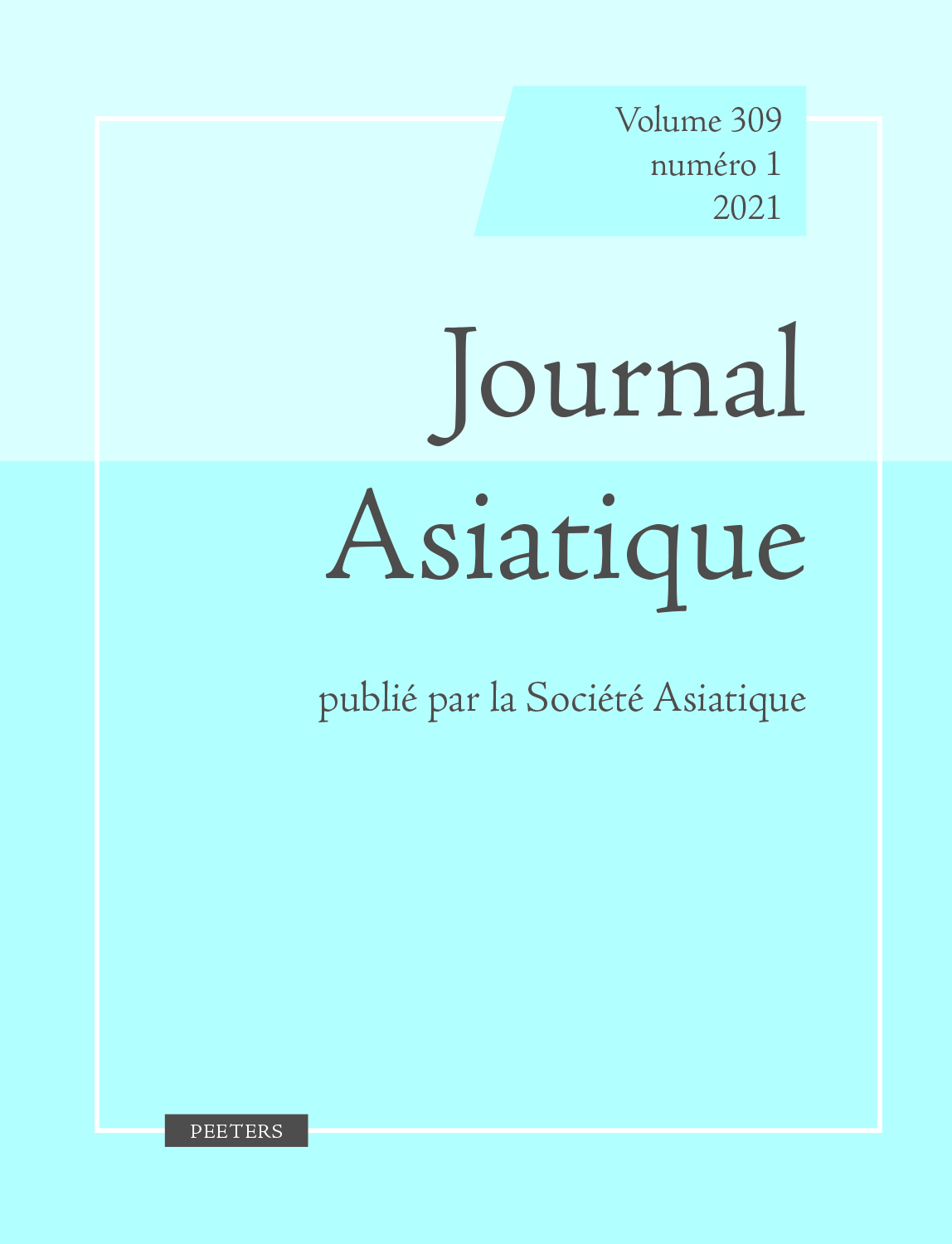next article in this issue  |

Preview first page |
Document Details : Title: Zwei Mittelassyrische Träger des Namens Šulmānu-Mušabši Author(s): BÁNYAI, Michael Journal: Journal Asiatique Volume: 304 Issue: 1 Date: 2016 Pages: 1-8 DOI: 10.2143/JA.304.1.3146830 Abstract : The paper deals with the question whether the several attestations of a high-ranking individual named Šulmānu-mušabši during the reign of Tukulti-Ninurta I are all to be associated with the same or rather instead with two different individuals. The first assumption leads to a sequence of grand viziers which is in strong contradiction for example with the archaeological record at Tell Fekheriye, where Aššur-iddin is attested till to the end of the middle-Assyrian occupation, while Šulmānu-mušabši, the grand-vizier, is entirely absent. BATSH 4, 9 can be read as alluding to the death of Šulmānu-mušabši and not to the preparations for his installation as a grand-vizier. The related question concerning the real position of the subordinate official Sîn-mudammeq under Aššur-iddin is discussed and results in a rejection of his identification as a vizier. L’article discute la question si les différentes attestations d’une personne de haut rang nommée Šulmānu-mušabši pendant le régime de Tukulti-Ninurta I sont tous à associer avec le grand vizir de ce nom, ou sont – au contraire – à repartiser entre multiples identités. La première hypothèse se trouve au conflit – pour exemple – avec le résultat des fouilles archéologiques de Tell Fekheriye. Aššur-iddin est attesté à Tell Fekheriye jusqu’au fin de la période d’occupation moyenne-assyrienne (qui est coïncidente avec les derniers années de Tukulti-Ninurta I), pendant que Šulmānu-mušabši, le grand vizir, en est entièrement absent au moment qu’on aurait expecté qu’il soit en contrôle de tout Hanigalbat. BATSH 4, 9, qui a été invoque pour attester les préparations pour l’installation de Šulmānu-mušabši dans la fonction de grand vizir à la suite de Aššur-iddin, peut confortablement être lu comme une allusion à son mort quelque temps avant. La discussion de la question reliée concernant la position de Sîn-mudammeq résulte dans un rejet de l’hypothèse qu’il aurait été un vizir au temps de Aššur-iddin. |
|


